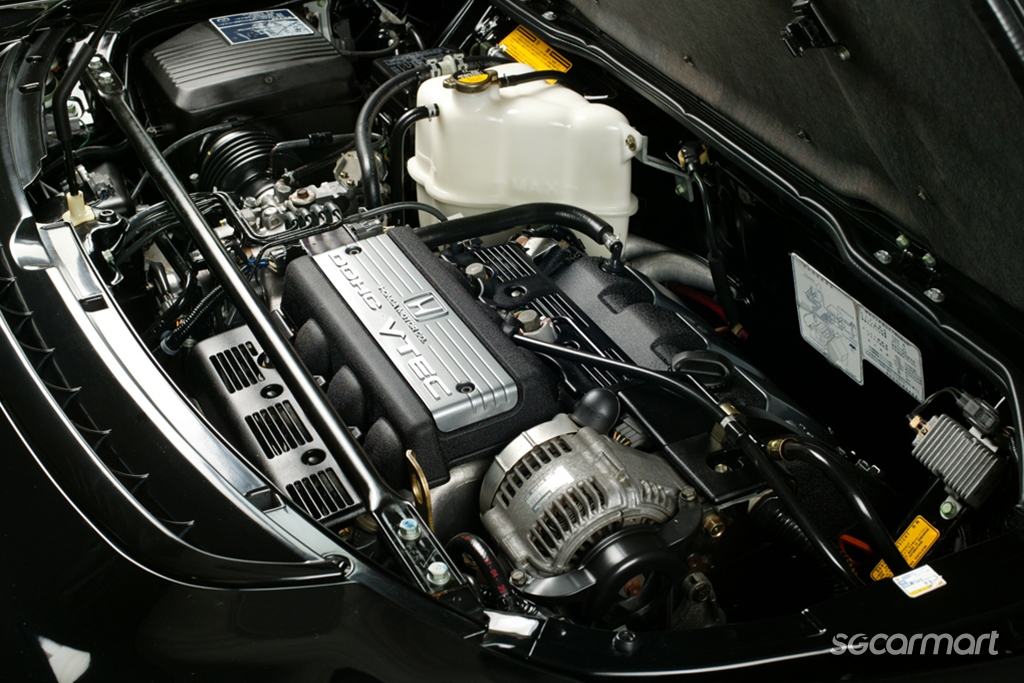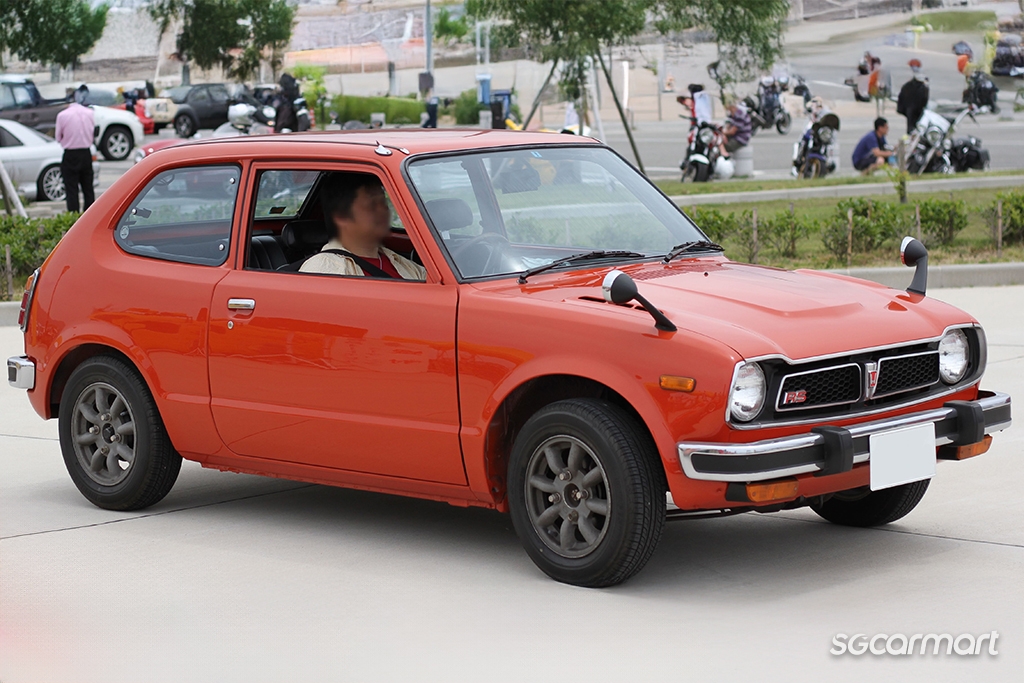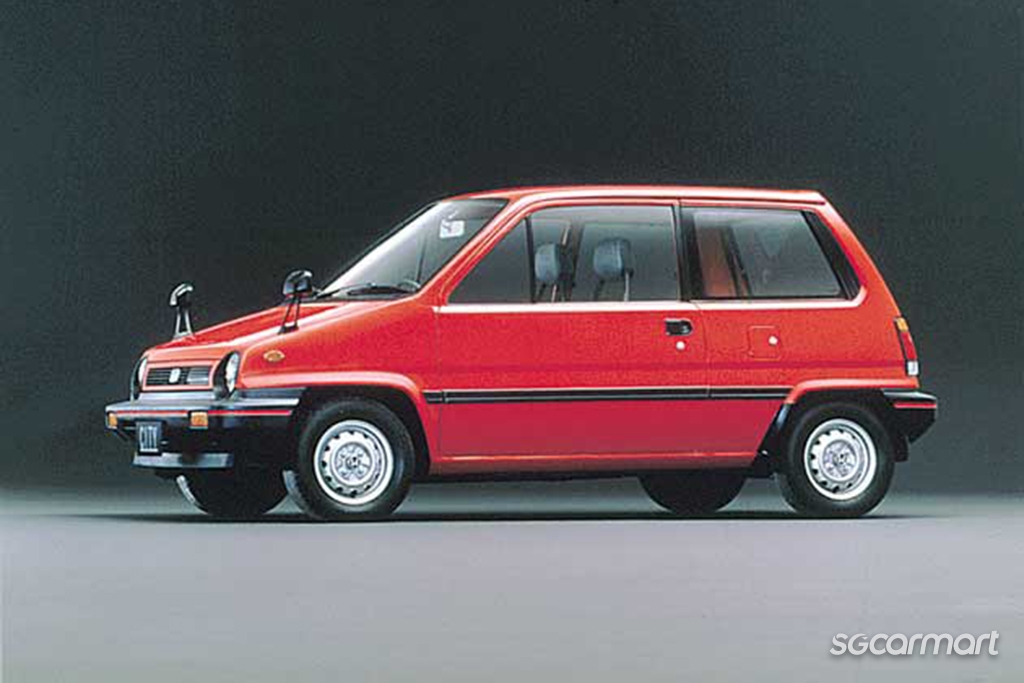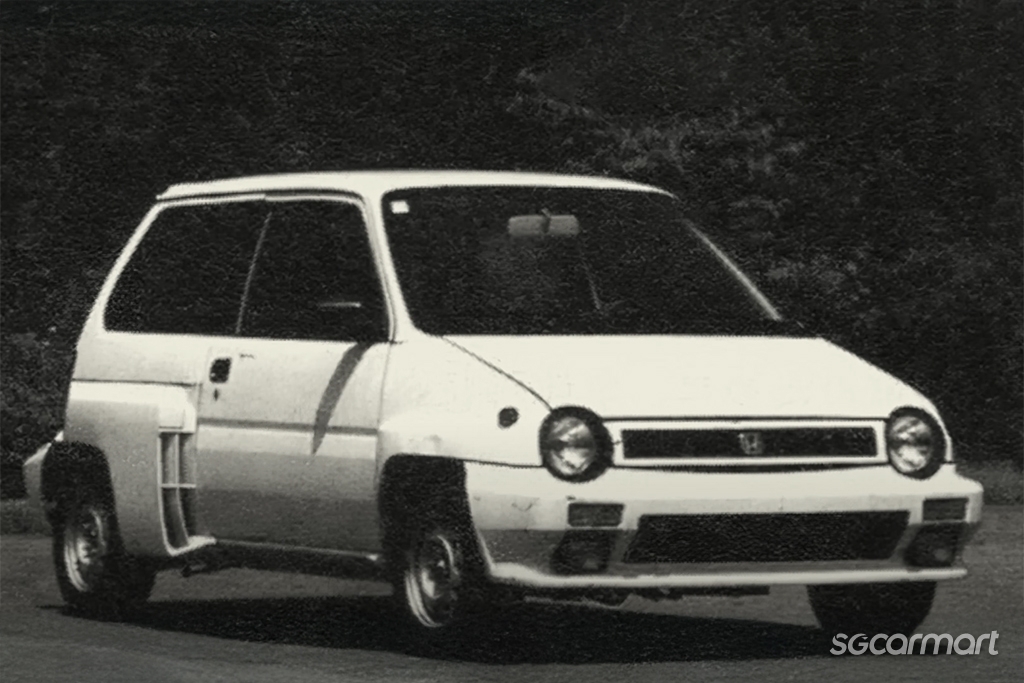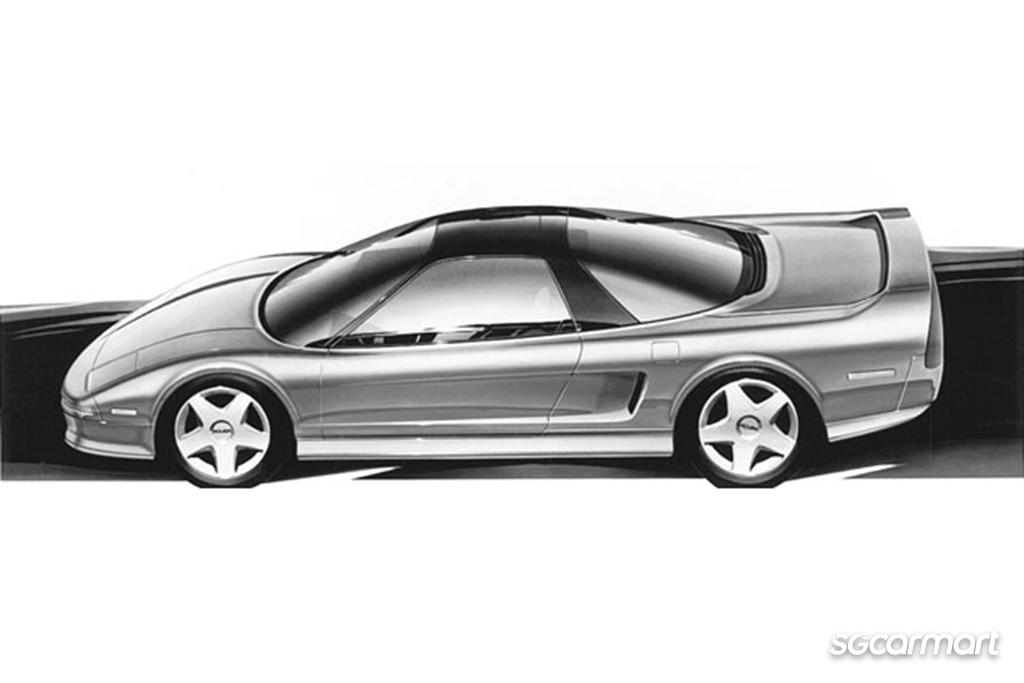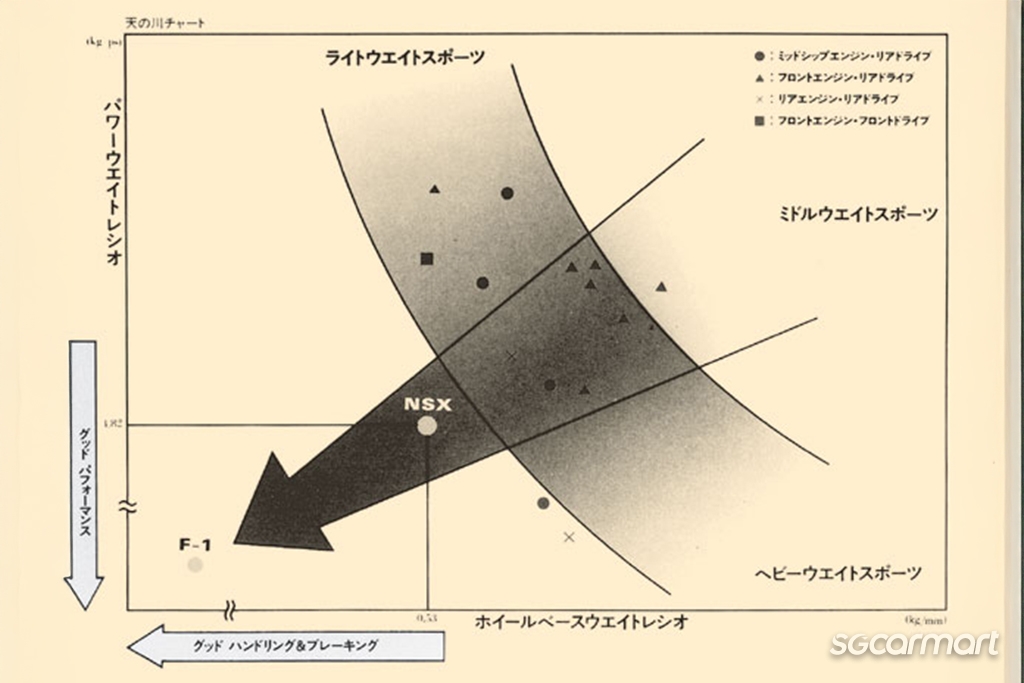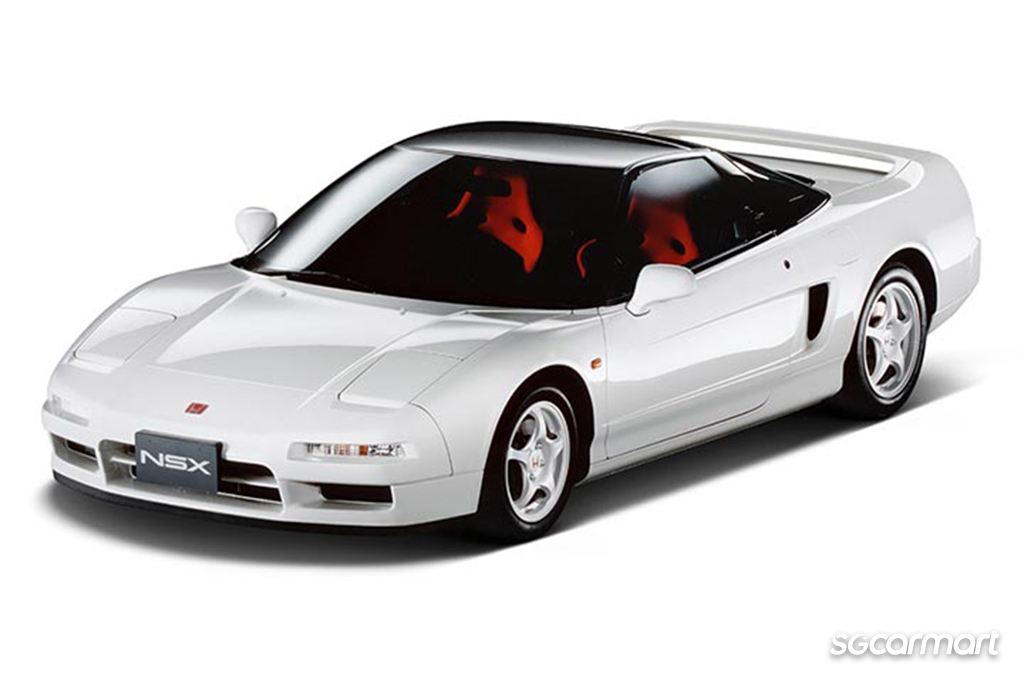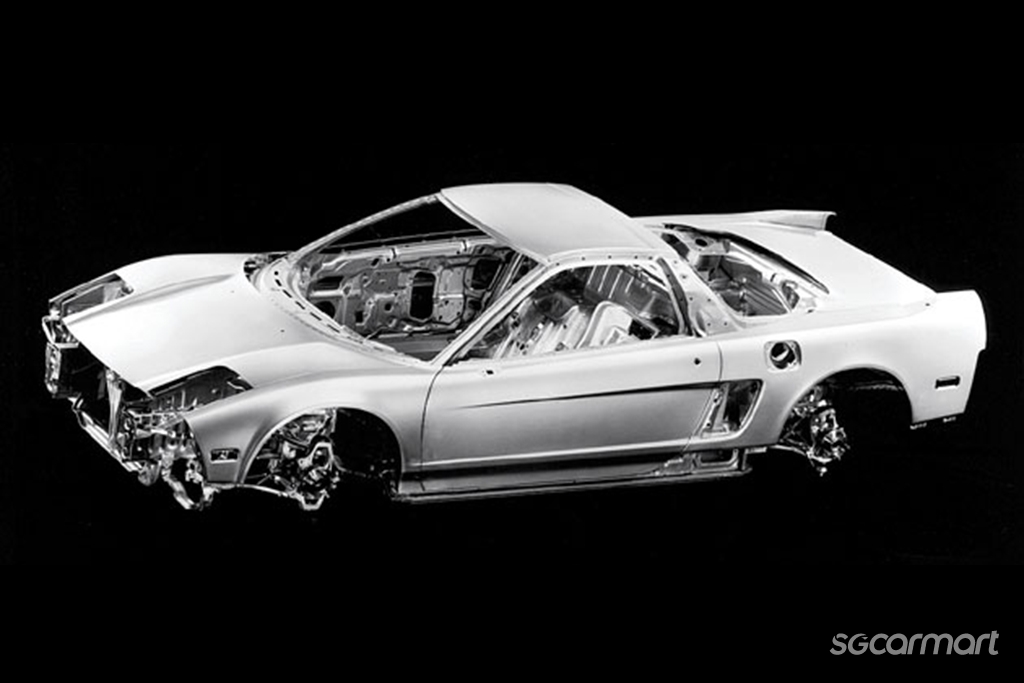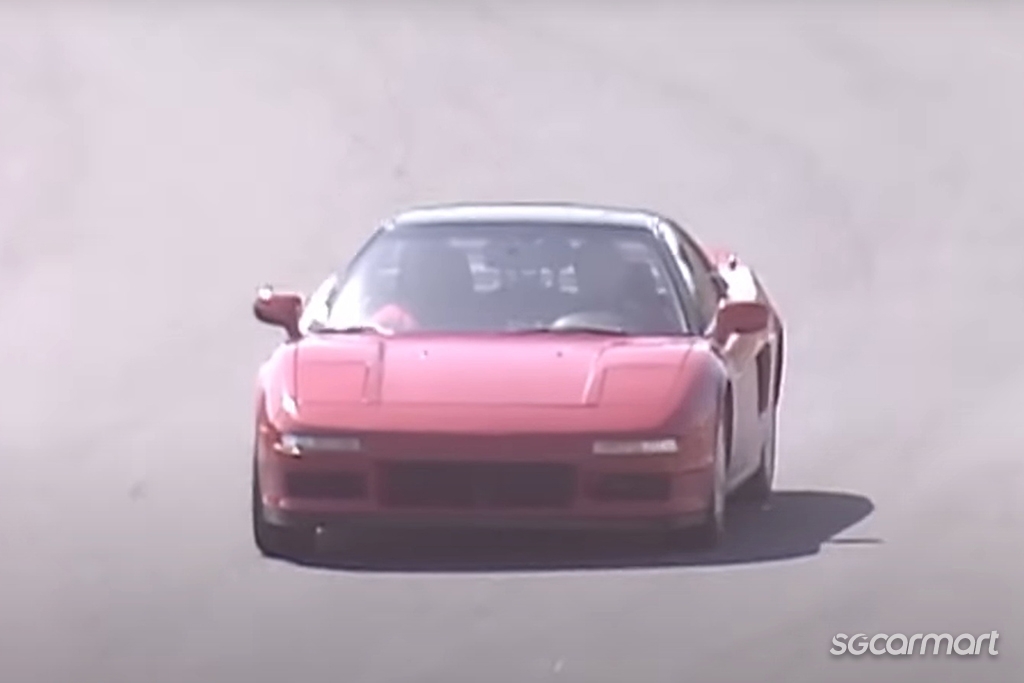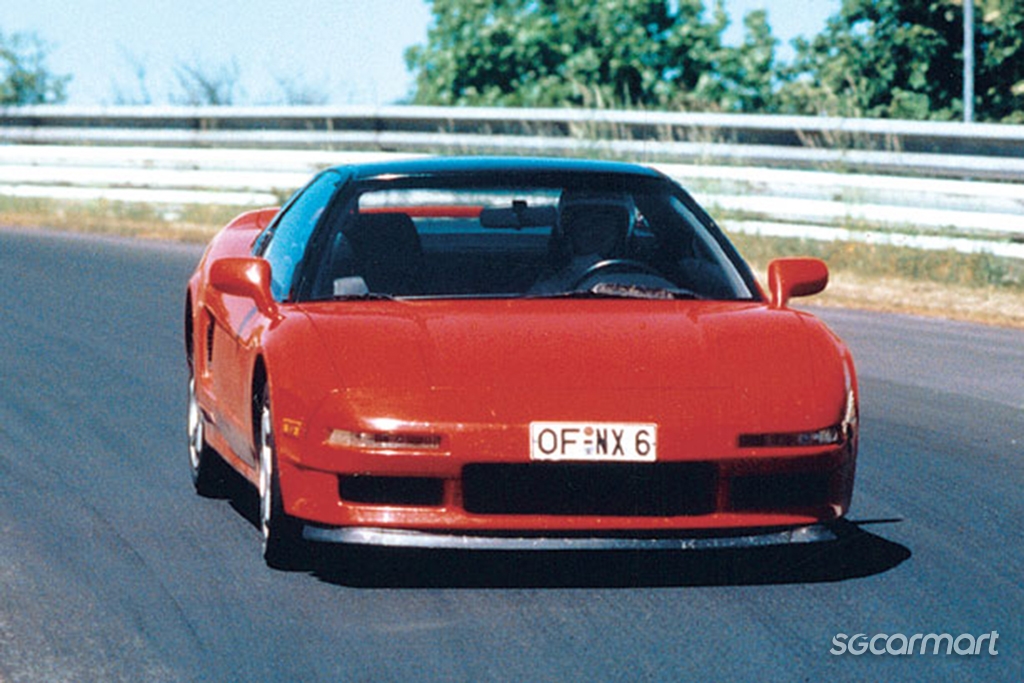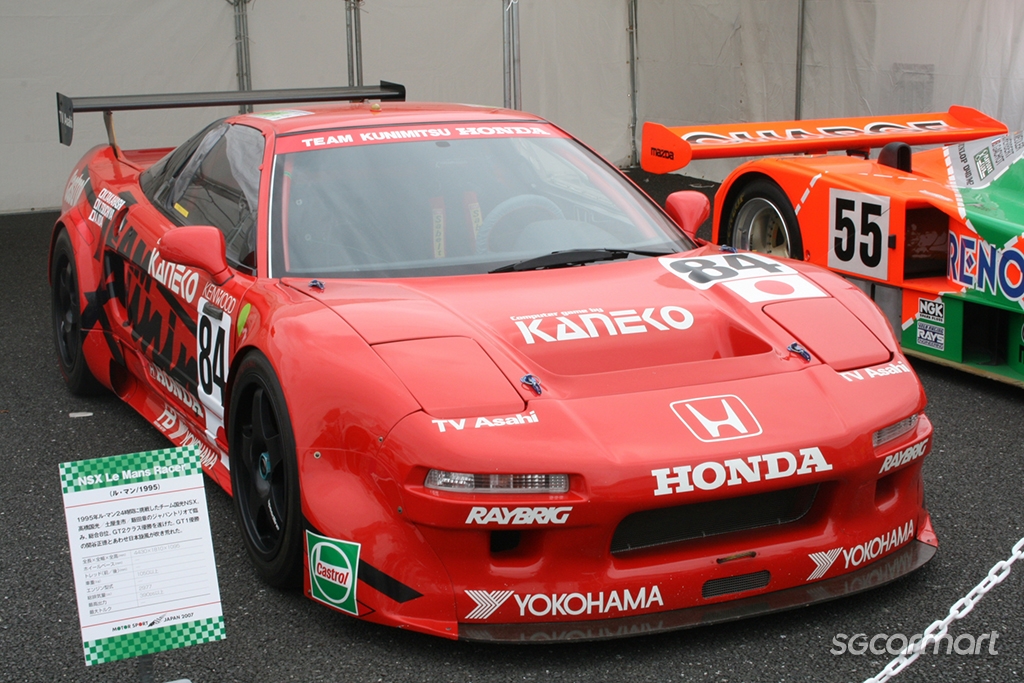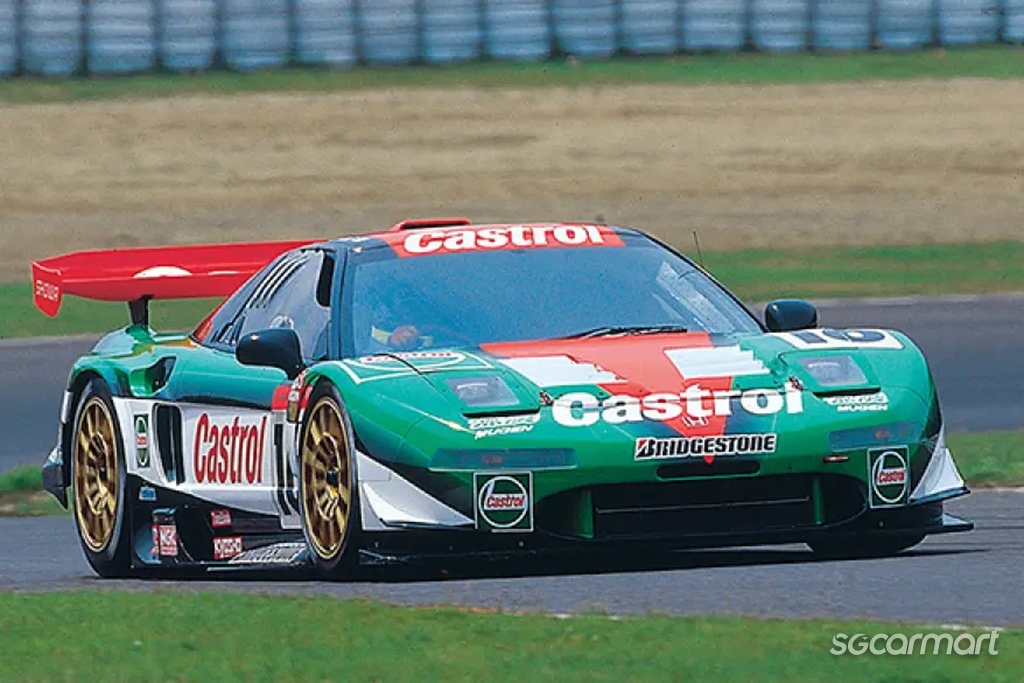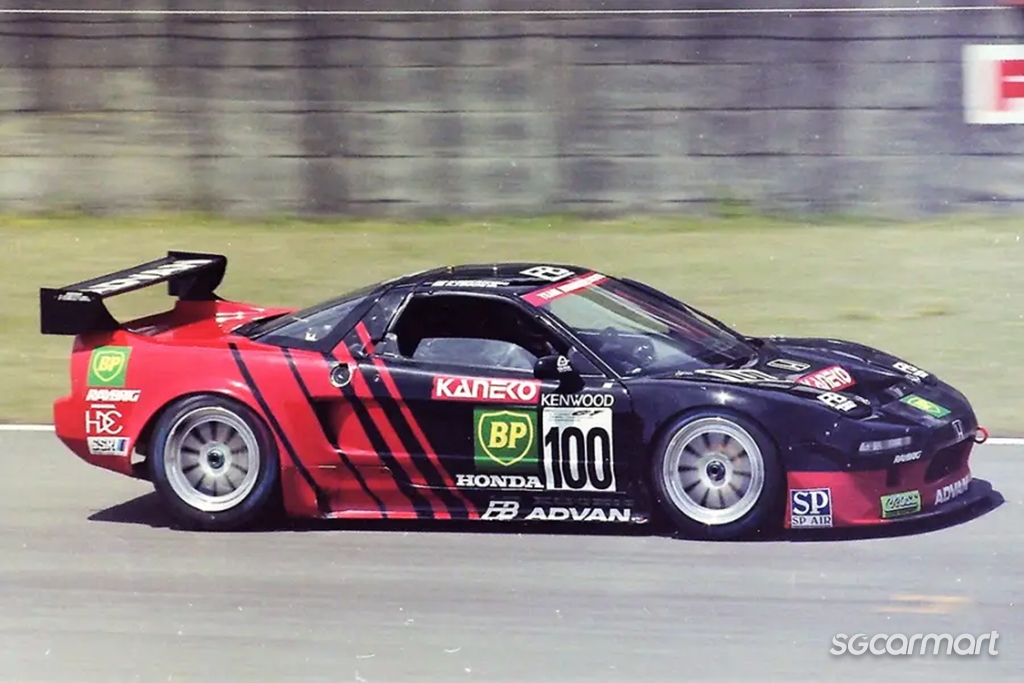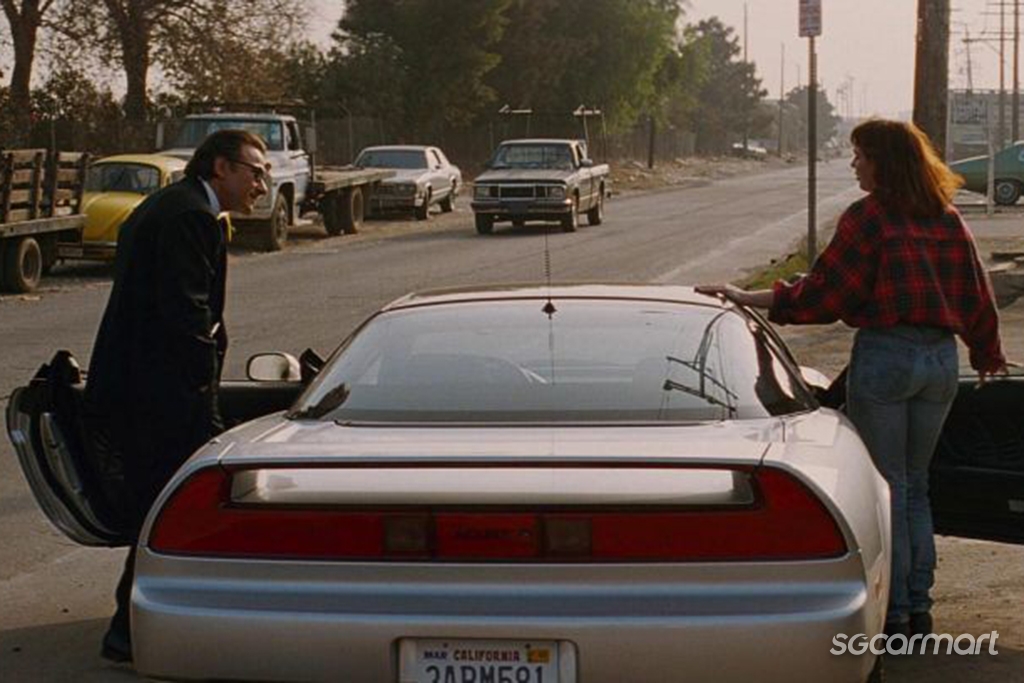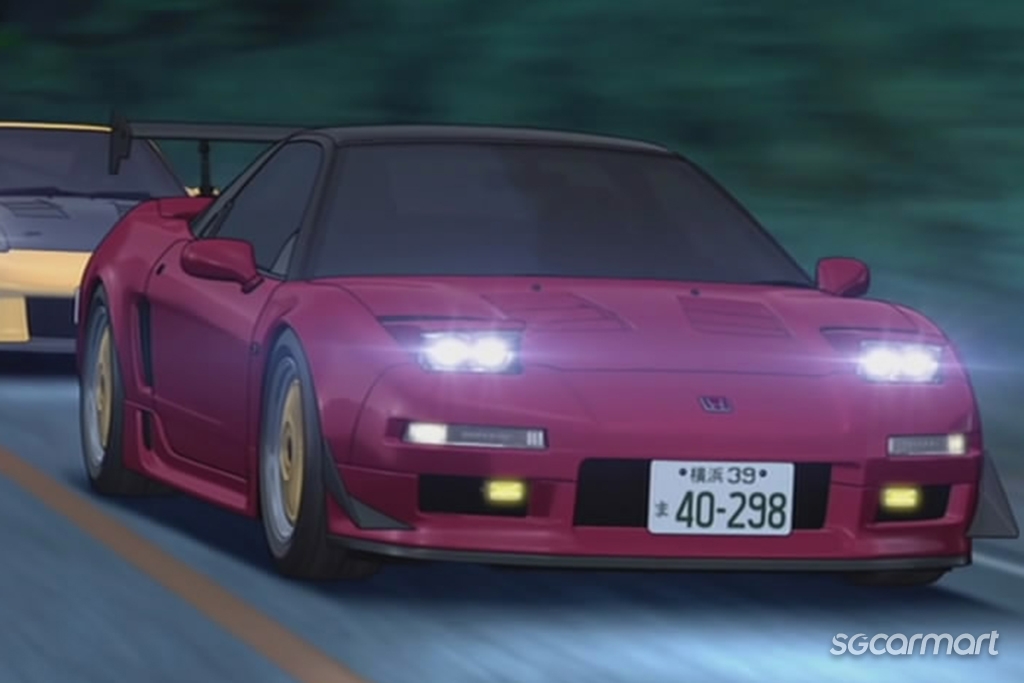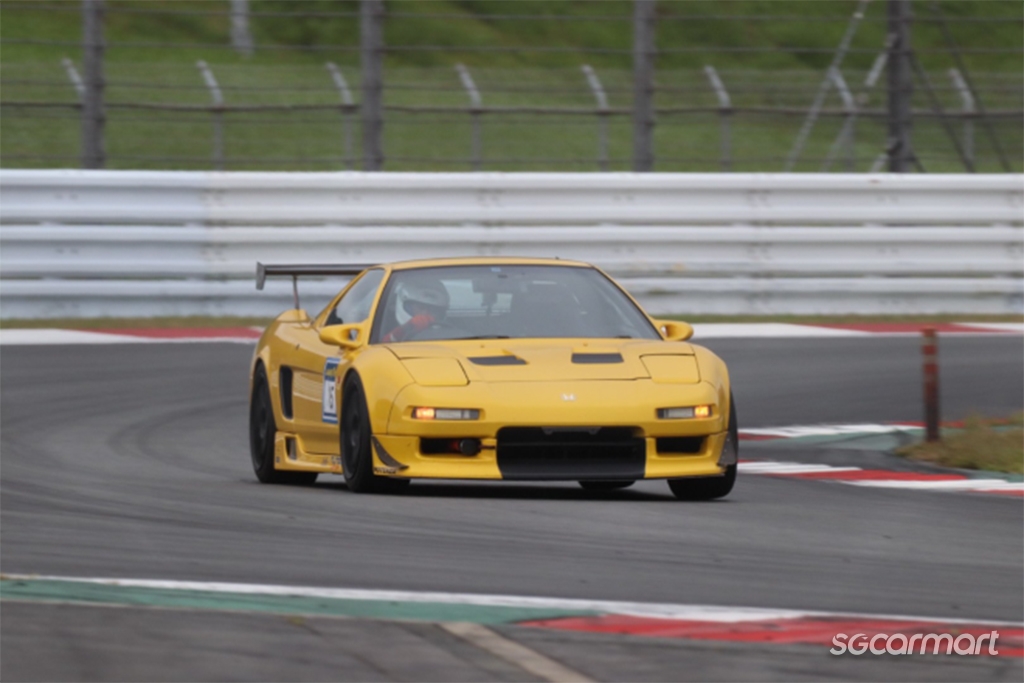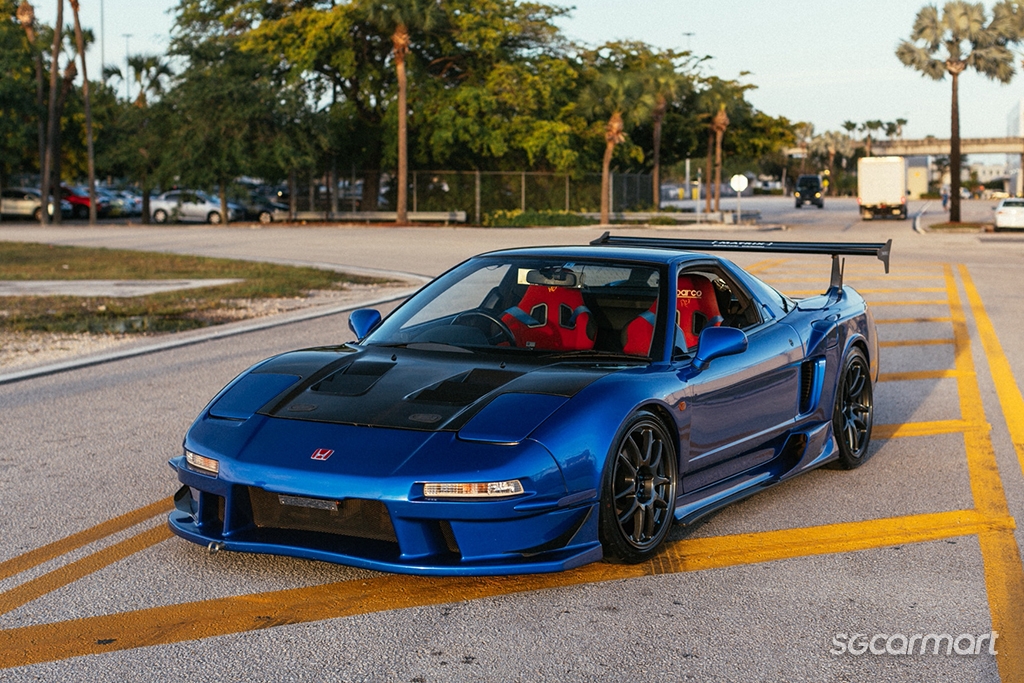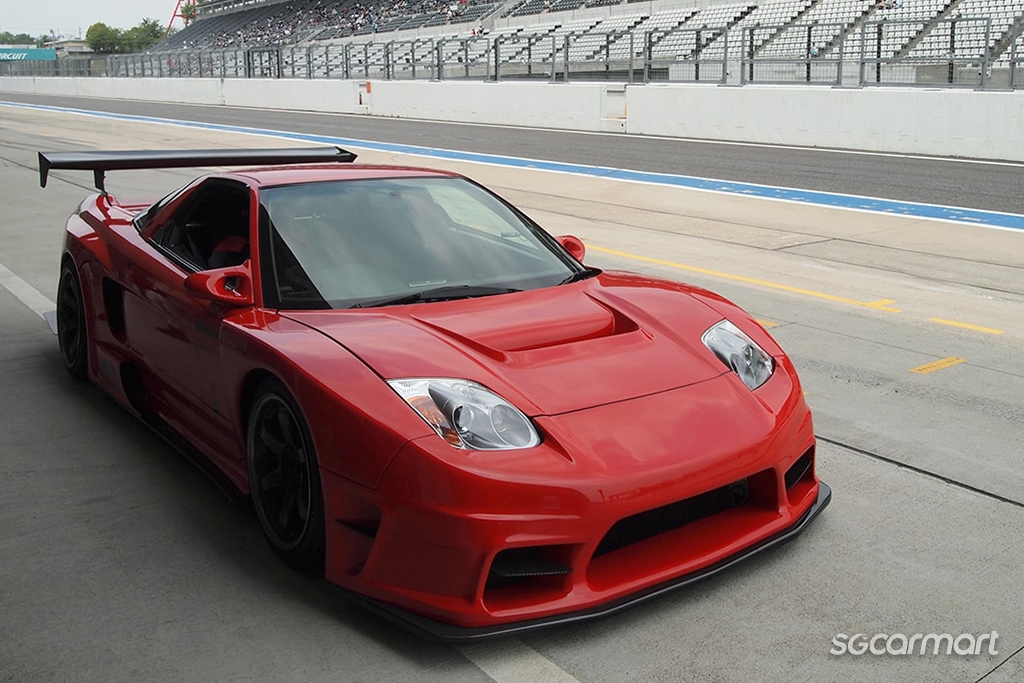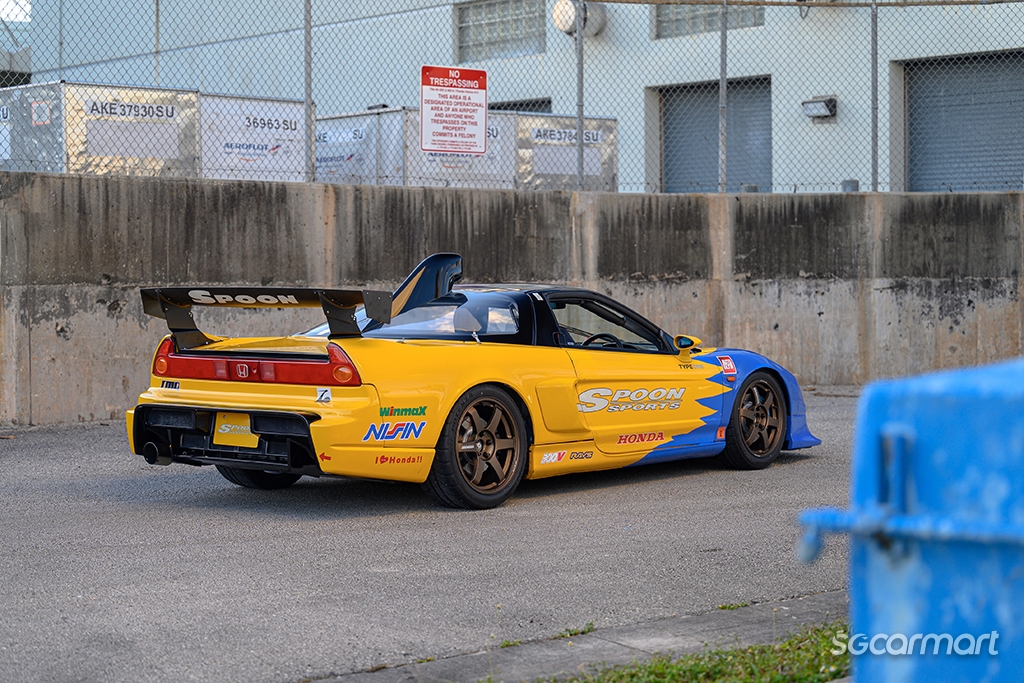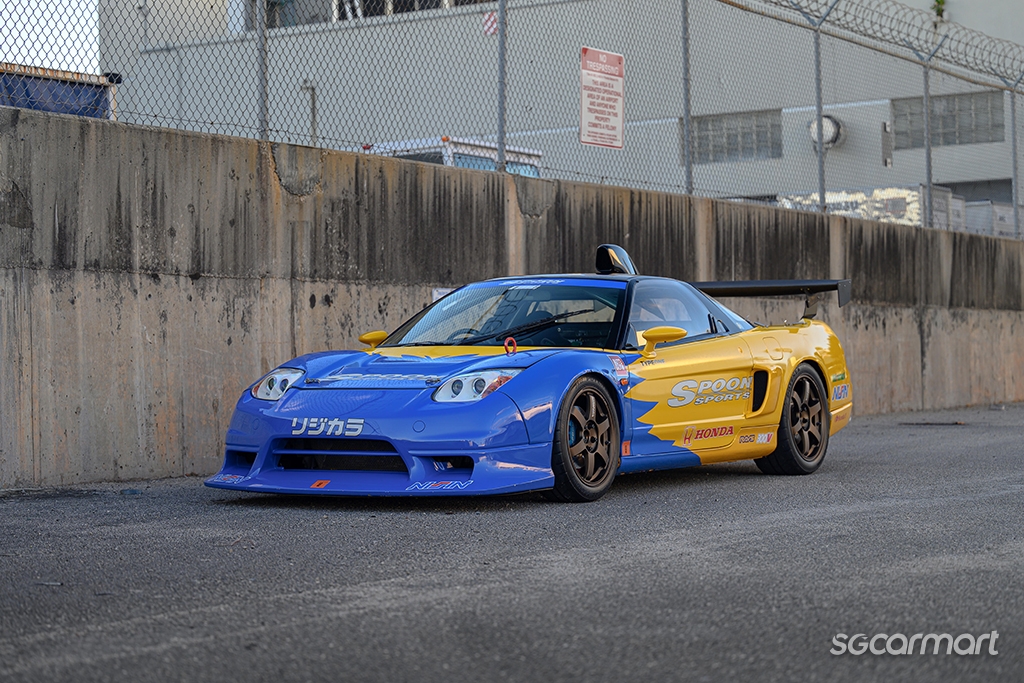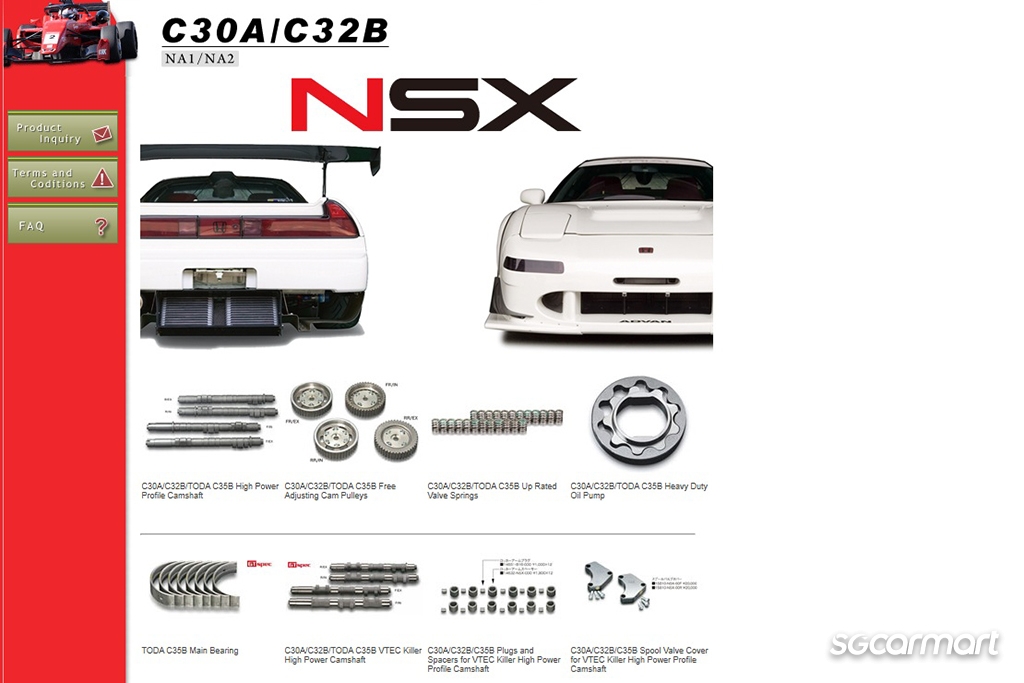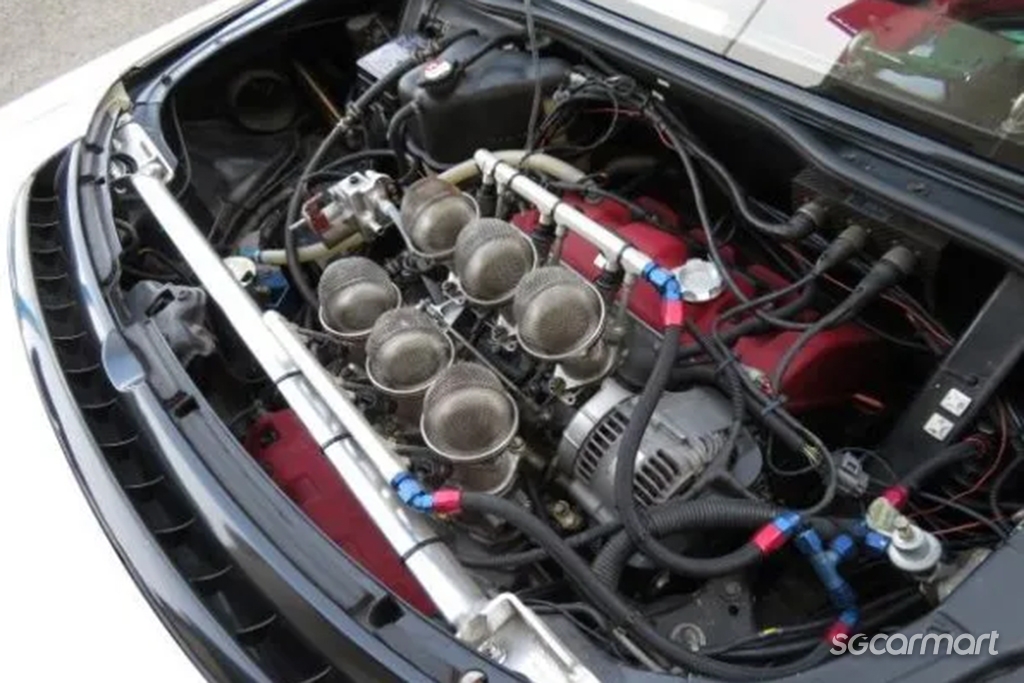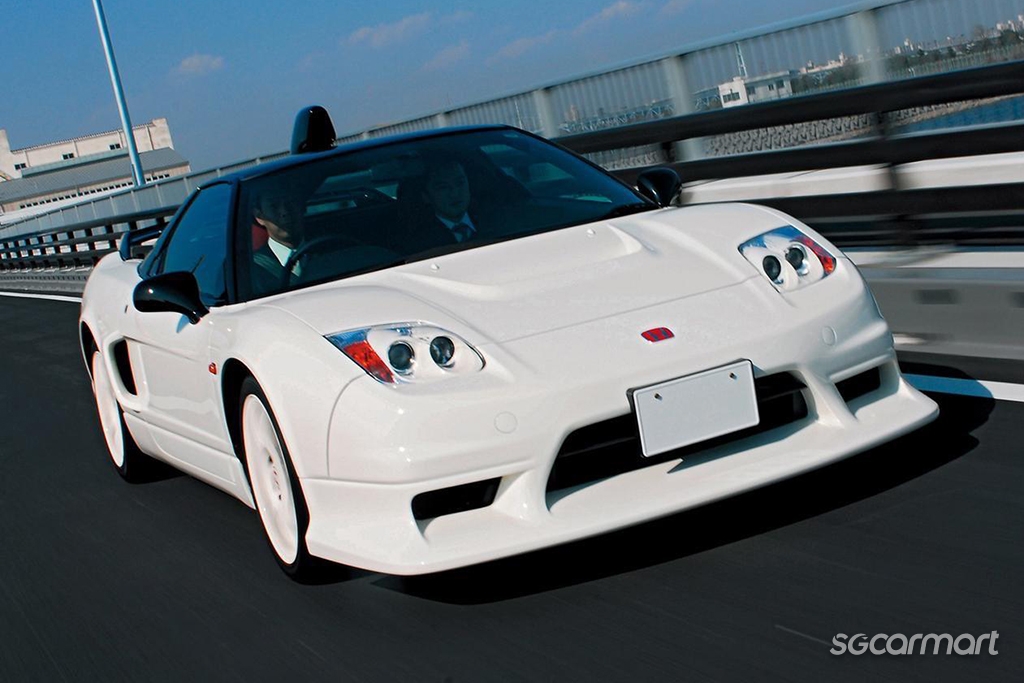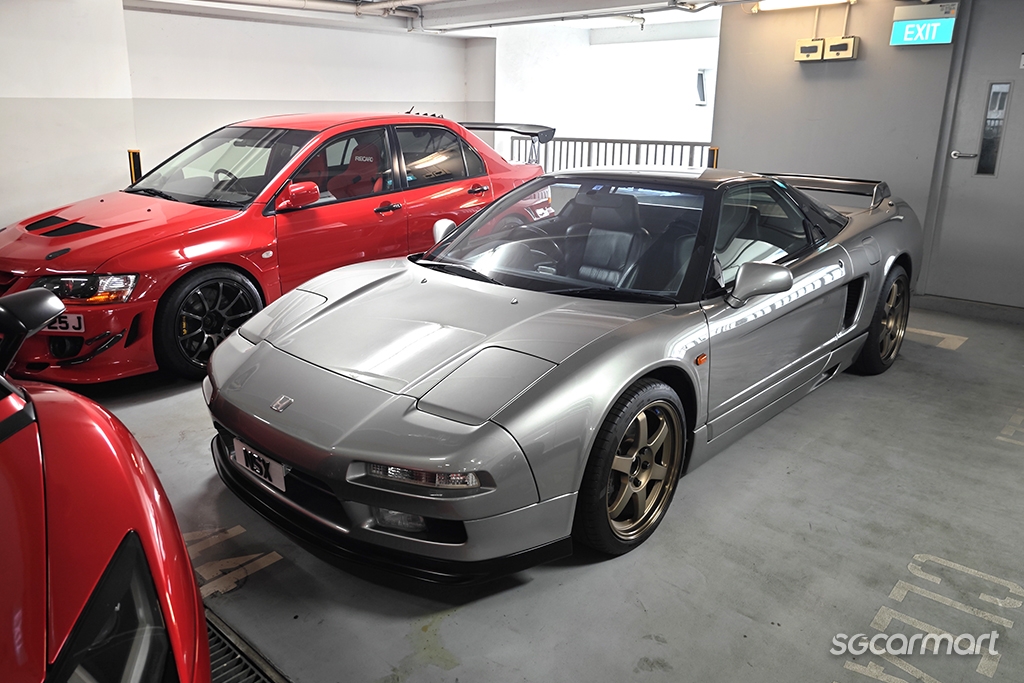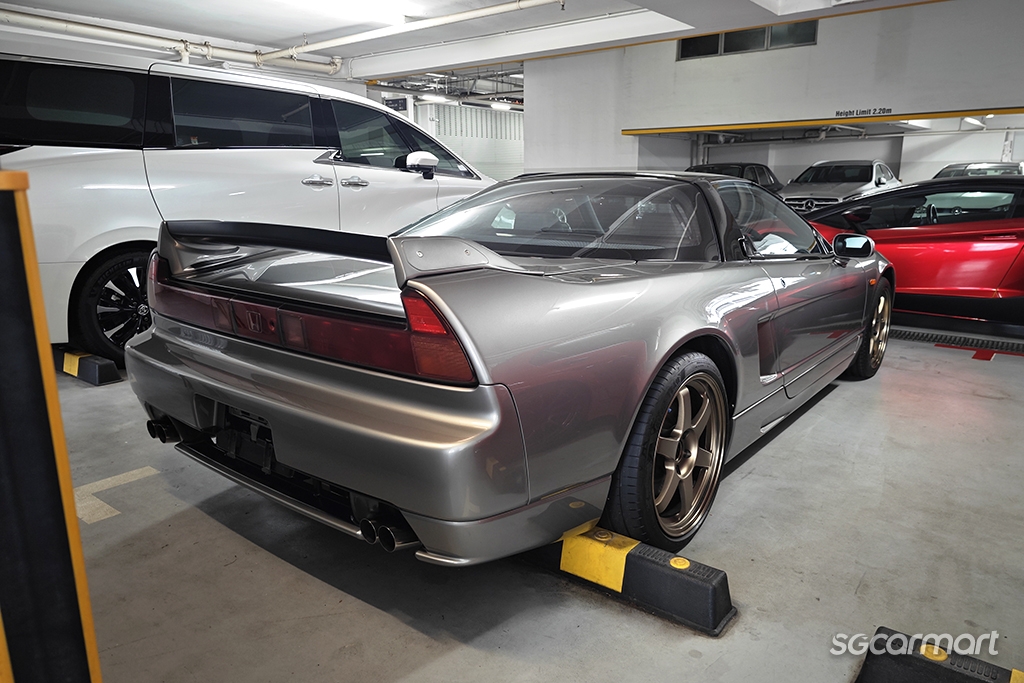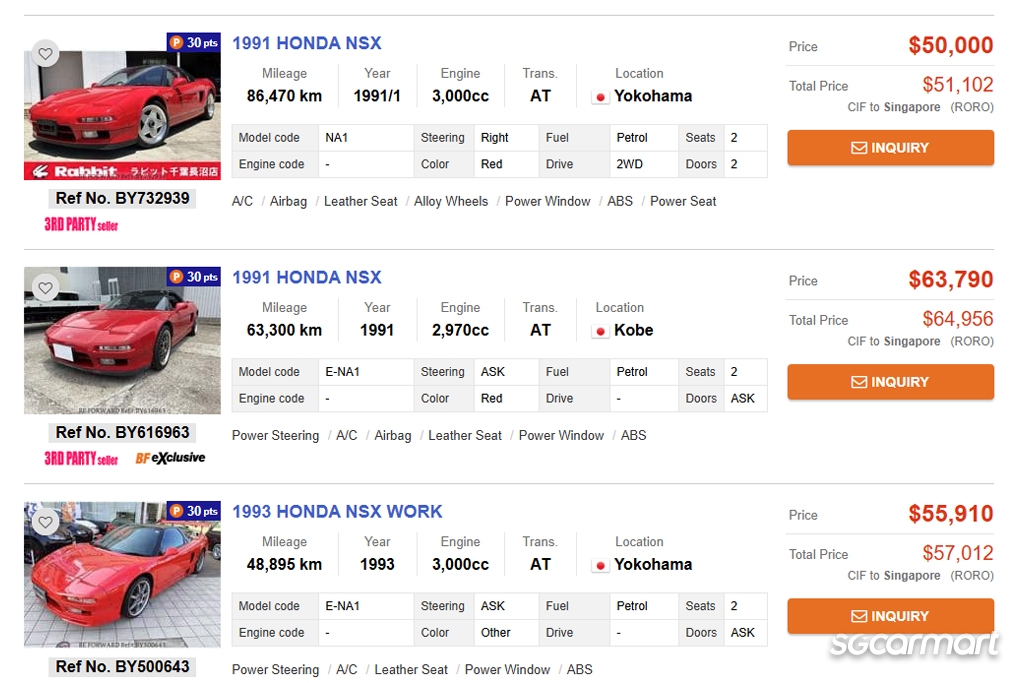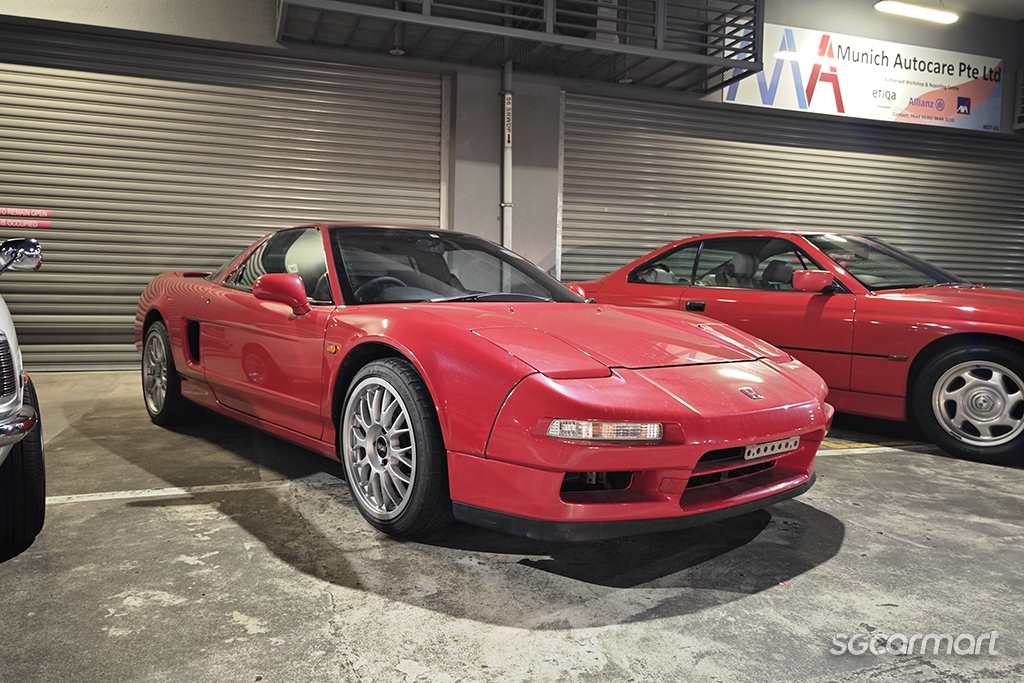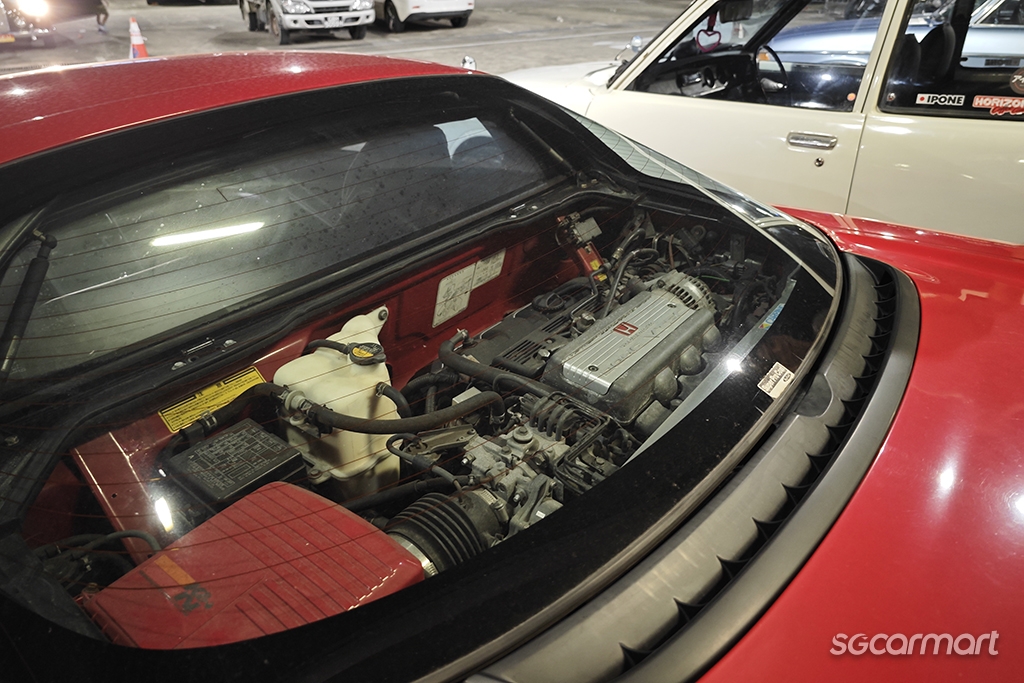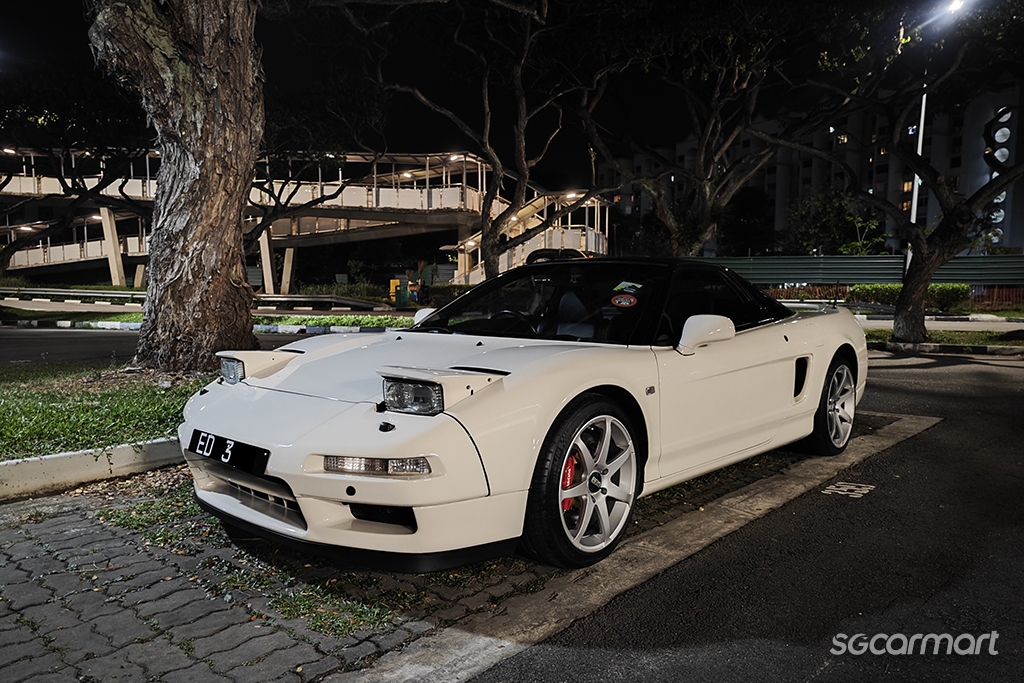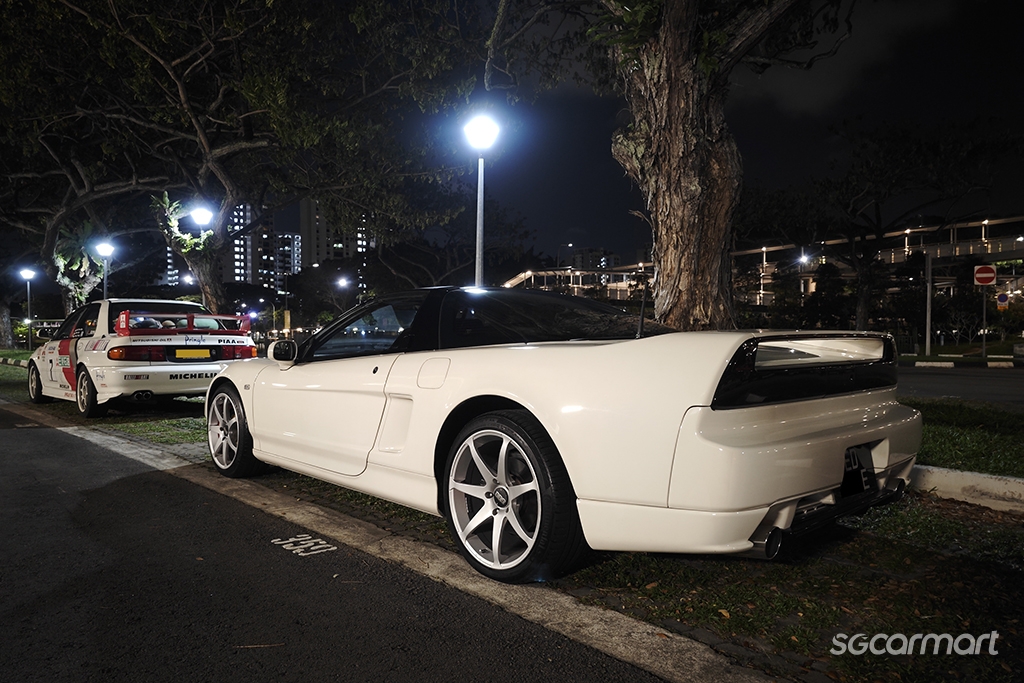Motoring Icons: JDM legends - Honda NSX
07 Oct 2025|2,287 views
On our previous Motoring Icons article about the Mazda RX-7, we brought up the topic of the golden era of the Japanese sports cars. During this period of time, there were four models known as the 'Four Heavenly Kings' or 'Four Horsemen' of JDM, which were the Toyota Supra, the Nissan Skyline GT-R, the Mazda RX-7, and the Honda NSX.
Of all four cars, I'll argue that the Honda NSX might just be the most special one. And there's many reasons why - it is the only one that's mid-engined, rear-wheel drive, developed with the input of the greatest F1 driver of all time, and has a timeless and elegant design that is unsurpassed till date.
From the time this series of articles was thought up, I've already known that the NSX has to be featured. And now, I've finally got around to it. This time, we are going to dive into the original Japanese supercar from the 90s - the Honda NSX.
Powertrain
Engine: C30A 2,977cc Naturally Aspirated V6, C32B 3,179cc Naturally Aspirated V6
Horsepower: 266bhp - 286bhp
Torque: 285Nm - 304Nm
Drivetrain layout: Mid-engine, rear-wheel drive
History of the NSX - Honda's first mid-engine rear-wheel drive sportscar
Honda has always had the reputation of a front-wheel drive car maker, even till today. Even the Civic, arguably the most popular model from the brand, is front-wheel drive as well.
But in the early 1980s, the brand's research and development team decided that it wanted to work on a new drive system - something to shift the brand from the front-engine, front-wheel drive format that it is so familiar with. And this was the start of the Honda NSX's story.
Honda's first foray into creating a mid-engine car was the experimental Honda City UMR concept - you could look at this as the first sizzle that eventually led to the legendary NSX
The development team then decided to focus on an underfloor, midship-engine, rear-wheel drive (UMR) format, which would allow packaging efficiency along with the sporty characteristics of the rear-wheel drive layout. You have to remember that Honda at this point was known for its compact cars - hence the test concept was constructed from a first-generation Honda City hatchback.
While the UMR City, built in 1983, resulted in unique handling characteristics that differed greatly from the original front-engine, front-wheel drive version, development was set aside due to the brand's technological limits.
Honda's engineers continued to research and work on the idea of creating a sportscar, something with a lower centre of gravity. Honda's participation in F1 during the period of time fuelled the decision for the brand to create a car that could bridge its compact front-wheel drive models and the incredible F1 cars. And 1985 was the year that Honda began the journey of creating its own sportscar.
To determine how a sportscar that could represent the Honda's name would be, the development team eventually devised a conceptual diagram that guided the development of the NSX.
Dubbed the Milky Way diagram due to how it looks, it represented the power-to-weight ratio (straight-line performance) along the Y-axis and wheelbase-to-weight ratio (turning and stopping performance) along the X-axis. Data from rival car models were plotted on this diagram, with the NSX targeted to surpass each of them, in order to create a sportscar that is as close to an F1 car as possible.
With such lofty goals, it isn't surprising that the NSX turned out to be one of the most revered sportscars in history - high-tech and clever engineering as well as design elements were all poured into its creation.
Why enthusiasts love it - a masterpiece built with cutting-edge technology
Many cars are loved due to emotional reasons, the way the car looks, and the sounds it makes. But the NSX is different - don't get me wrong, it is an absolute stunner, but it is also a technological masterpiece that has more than just looks.
To achieve the goal of outperforming its rivals with better power-to-weight and wheelbase-to-weight ratio, the NSX had to be lightweight. At the same time, the team wanted the car to be well-equipped with power windows, full-automatic air conditioning, traction control and ABS. Hence, the team decided that the NSX would have the world's first all-aluminium monocoque body, which was quite a feat. The all-aluminium monocoque resulted in weight savings of nearly 200kg for the entire car.
The NSX was developed with the inputs of F1 driver Ayrton Senna, which prompted the team to improve the rigidity of the car
And that isn't all, it was also developed with the inputs of legendary F1 driver, Ayrton Senna. The driver commented that the car "felt a little fragile" - this prompted the team to strive for improved rigidity. To do so, the car was tested and developed on the famed Nurburgring course, and after tedious research and development, they managed to increase the car's rigidity by 50%.
All these efforts have resulted in an absolutely amazing car - it was even referenced during the development of the Mclaren F1, according to Gordon Murray, Chief Designer of the Mclaren F1, "the Mclaren F1 needed to be faster than the NSX, but the NSX's ride quality and handling would become our new design target."
Motorsports, pop culture, and car scenes - the NSX is iconic and well-loved
While race cars are heavily modified, having a good base plays a huge part in creating a competitive race car, and the NSX was exactly that.
The NSX competed in the 1994-1996 24 Hours of Le Mans, winning its GT2 class in 1995, and achieving a podium finish in 1996. These race cars started out as factory NSX-R shells that were reworked with a custom dry carbon fibre tub bonded to the interior, along with other extensive modification. But the point is, it was competitive even without being completely engineered from ground up - its competitors included the Porsche 911 GT2, which was a homologation special, and the Callaway Corvette Supernatural GT2, which had a powerful 6.2-litre V8 engine.
The NSX saw even more success in Japan's JGTC and Super GT Series, nabbing a total of 36 race wins and 45 pole positions throughout the time it competed
In Japan's JGTC and Super GT series, the NSX saw even more success in its various forms - the NSX-GT, competed in the series between 1997 and 2009, winning 36 races with 45 pole positions.
From a cult classic movie, to the most iconic racing anime - the NSX is well represented in pop culture
Racing aside, the NSX also received plenty of love in pop culture. It was featured in movies such as Quentin Tarantino's Pulp Fiction, and the Fast and the Furious series. Car enthusiasts who've watched Initial D would also recognise it as Go Hojo's NSX, which was portrayed in the anime to be specially tuned to be the ultimate weapon on the mountain roads.
Go Hojo's NSX in the Initial D anime is actually fitted with parts from Advance, an actual NSX specialist shop in Japan
Naturally, the NSX is a massively popular car for tuners - Go Hojo's NSX in Initial D has been fitted with many parts from Advance, an NSX specialist shop in Japan.
Sorcery Design Creation International is yet another prominent company specialising in NSX. It offers GT race car inspired bodykits that transform your road-going NSX into a truly mean-looking machine.
Being a Honda also meant it received plenty of attention from Honda specialist shops such as Spoon Sports, which offered plenty of parts for the car. Spoon Sports has even built its own NSX-R GT, putting everything the company knows into it.
Toda Racing also produces everything you'll need to upgrade the NSX's engine into a full JGTC spec race engine
Famous engine specialist Toda Racing also produces everything needed for a complete upgrade of the NSX's engine, including complete GT race-spec engines.
On the topic of GT cars, Honda has also created various special versions of the NSX. Among all, the homologation special NSX-R GT was the most exclusive version, featuring a prominent roof snorkel and a special aero kit - only five units were ever made.
Get one soon if you want an NSX!
The allure of the world's first sportscar built with an aluminium monocoque is clear for all to see. Widely regarded as a 'Japanese Ferrari', the Honda NSX's popularity continues to grow.
It doesn't get as much attention as its fellow 'JDM golden era' counterparts which are turbocharged (Skyline GT-R and Supra) just yet, hence its prices on the international market is still within an acceptable range.
Add to the fact that they were produced in a myriad of configurations and had a relatively long production run, availability of the NSX isn't too bad - a quick search online has shown prices in the ballpark of SGD $70,000 to buy a less desirable automatic variant in fair shape in Japan (nicer units can command over $200,000).
Unregistered units of NSX has been popping up in Singapore, clearly waiting to be registered under the classic vehicle scheme
This means that you can probably ship one over to Singapore and register it as a classic car without spending more than a quarter of a million dollars if you aren't a picky buyer. In fact, with the first NSXs produced in 1990, many local enthusiasts have already brought in several NSXs with the intention of registering them.
There are several 'black plate', non-classic NSX in Singapore, but non of them are for sale as of now
While there are several known locally-registered 'black plate' NSX in Singapore, none of them are available for sale, and even if they do, you can be assured that they won't be cheap.
Hence, if you are in the market for a legendary sports car, and took a liking to the NSX, I would urge you to get one soon, for I can only imagine their price rocketing in the future.
Enjoyed reading about the NSX? Here are some other legends that you should read about:
Mazda's RX-7 is known for its sleek shape, but above all else, its unique powertrain
Did you know that the AE86 was already a popular enthusiast choice before its Anime fame?
The Skyline DR30 is the hidden gem that you need to know about!
On our previous Motoring Icons article about the Mazda RX-7, we brought up the topic of the golden era of the Japanese sports cars. During this period of time, there were four models known as the 'Four Heavenly Kings' or 'Four Horsemen' of JDM, which were the Toyota Supra, the Nissan Skyline GT-R, the Mazda RX-7, and the Honda NSX.
Of all four cars, I'll argue that the Honda NSX might just be the most special one. And there's many reasons why - it is the only one that's mid-engined, rear-wheel drive, developed with the input of the greatest F1 driver of all time, and has a timeless and elegant design that is unsurpassed till date.
From the time this series of articles was thought up, I've already known that the NSX has to be featured. And now, I've finally got around to it. This time, we are going to dive into the original Japanese supercar from the 90s - the Honda NSX.
Powertrain
Engine: C30A 2,977cc Naturally Aspirated V6, C32B 3,179cc Naturally Aspirated V6
Horsepower: 266bhp - 286bhp
Torque: 285Nm - 304Nm
Drivetrain layout: Mid-engine, rear-wheel drive
History of the NSX - Honda's first mid-engine rear-wheel drive sportscar
Honda has always had the reputation of a front-wheel drive car maker, even till today. Even the Civic, arguably the most popular model from the brand, is front-wheel drive as well.
But in the early 1980s, the brand's research and development team decided that it wanted to work on a new drive system - something to shift the brand from the front-engine, front-wheel drive format that it is so familiar with. And this was the start of the Honda NSX's story.
Honda's first foray into creating a mid-engine car was the experimental Honda City UMR concept - you could look at this as the first sizzle that eventually led to the legendary NSX
The development team then decided to focus on an underfloor, midship-engine, rear-wheel drive (UMR) format, which would allow packaging efficiency along with the sporty characteristics of the rear-wheel drive layout. You have to remember that Honda at this point was known for its compact cars - hence the test concept was constructed from a first-generation Honda City hatchback.
While the UMR City, built in 1983, resulted in unique handling characteristics that differed greatly from the original front-engine, front-wheel drive version, development was set aside due to the brand's technological limits.
Honda's engineers continued to research and work on the idea of creating a sportscar, something with a lower centre of gravity. Honda's participation in F1 during the period of time fuelled the decision for the brand to create a car that could bridge its compact front-wheel drive models and the incredible F1 cars. And 1985 was the year that Honda began the journey of creating its own sportscar.
To determine how a sportscar that could represent the Honda's name would be, the development team eventually devised a conceptual diagram that guided the development of the NSX.
Dubbed the Milky Way diagram due to how it looks, it represented the power-to-weight ratio (straight-line performance) along the Y-axis and wheelbase-to-weight ratio (turning and stopping performance) along the X-axis. Data from rival car models were plotted on this diagram, with the NSX targeted to surpass each of them, in order to create a sportscar that is as close to an F1 car as possible.
With such lofty goals, it isn't surprising that the NSX turned out to be one of the most revered sportscars in history - high-tech and clever engineering as well as design elements were all poured into its creation.
Why enthusiasts love it - a masterpiece built with cutting-edge technology
Many cars are loved due to emotional reasons, the way the car looks, and the sounds it makes. But the NSX is different - don't get me wrong, it is an absolute stunner, but it is also a technological masterpiece that has more than just looks.
To achieve the goal of outperforming its rivals with better power-to-weight and wheelbase-to-weight ratio, the NSX had to be lightweight. At the same time, the team wanted the car to be well-equipped with power windows, full-automatic air conditioning, traction control and ABS. Hence, the team decided that the NSX would have the world's first all-aluminium monocoque body, which was quite a feat. The all-aluminium monocoque resulted in weight savings of nearly 200kg for the entire car.
The NSX was developed with the inputs of F1 driver Ayrton Senna, which prompted the team to improve the rigidity of the car
And that isn't all, it was also developed with the inputs of legendary F1 driver, Ayrton Senna. The driver commented that the car "felt a little fragile" - this prompted the team to strive for improved rigidity. To do so, the car was tested and developed on the famed Nurburgring course, and after tedious research and development, they managed to increase the car's rigidity by 50%.
All these efforts have resulted in an absolutely amazing car - it was even referenced during the development of the Mclaren F1, according to Gordon Murray, Chief Designer of the Mclaren F1, "the Mclaren F1 needed to be faster than the NSX, but the NSX's ride quality and handling would become our new design target."
Motorsports, pop culture, and car scenes - the NSX is iconic and well-loved
While race cars are heavily modified, having a good base plays a huge part in creating a competitive race car, and the NSX was exactly that.
The NSX competed in the 1994-1996 24 Hours of Le Mans, winning its GT2 class in 1995, and achieving a podium finish in 1996. These race cars started out as factory NSX-R shells that were reworked with a custom dry carbon fibre tub bonded to the interior, along with other extensive modification. But the point is, it was competitive even without being completely engineered from ground up - its competitors included the Porsche 911 GT2, which was a homologation special, and the Callaway Corvette Supernatural GT2, which had a powerful 6.2-litre V8 engine.
The NSX saw even more success in Japan's JGTC and Super GT Series, nabbing a total of 36 race wins and 45 pole positions throughout the time it competed
In Japan's JGTC and Super GT series, the NSX saw even more success in its various forms - the NSX-GT, competed in the series between 1997 and 2009, winning 36 races with 45 pole positions.
From a cult classic movie, to the most iconic racing anime - the NSX is well represented in pop culture
Racing aside, the NSX also received plenty of love in pop culture. It was featured in movies such as Quentin Tarantino's Pulp Fiction, and the Fast and the Furious series. Car enthusiasts who've watched Initial D would also recognise it as Go Hojo's NSX, which was portrayed in the anime to be specially tuned to be the ultimate weapon on the mountain roads.
Go Hojo's NSX in the Initial D anime is actually fitted with parts from Advance, an actual NSX specialist shop in Japan
Naturally, the NSX is a massively popular car for tuners - Go Hojo's NSX in Initial D has been fitted with many parts from Advance, an NSX specialist shop in Japan.
Sorcery Design Creation International is yet another prominent company specialising in NSX. It offers GT race car inspired bodykits that transform your road-going NSX into a truly mean-looking machine.
Being a Honda also meant it received plenty of attention from Honda specialist shops such as Spoon Sports, which offered plenty of parts for the car. Spoon Sports has even built its own NSX-R GT, putting everything the company knows into it.
Toda Racing also produces everything you'll need to upgrade the NSX's engine into a full JGTC spec race engine
Famous engine specialist Toda Racing also produces everything needed for a complete upgrade of the NSX's engine, including complete GT race-spec engines.
On the topic of GT cars, Honda has also created various special versions of the NSX. Among all, the homologation special NSX-R GT was the most exclusive version, featuring a prominent roof snorkel and a special aero kit - only five units were ever made.
Get one soon if you want an NSX!
The allure of the world's first sportscar built with an aluminium monocoque is clear for all to see. Widely regarded as a 'Japanese Ferrari', the Honda NSX's popularity continues to grow.
It doesn't get as much attention as its fellow 'JDM golden era' counterparts which are turbocharged (Skyline GT-R and Supra) just yet, hence its prices on the international market is still within an acceptable range.
Add to the fact that they were produced in a myriad of configurations and had a relatively long production run, availability of the NSX isn't too bad - a quick search online has shown prices in the ballpark of SGD $70,000 to buy a less desirable automatic variant in fair shape in Japan (nicer units can command over $200,000).
Unregistered units of NSX has been popping up in Singapore, clearly waiting to be registered under the classic vehicle scheme
This means that you can probably ship one over to Singapore and register it as a classic car without spending more than a quarter of a million dollars if you aren't a picky buyer. In fact, with the first NSXs produced in 1990, many local enthusiasts have already brought in several NSXs with the intention of registering them.
There are several 'black plate', non-classic NSX in Singapore, but non of them are for sale as of now
While there are several known locally-registered 'black plate' NSX in Singapore, none of them are available for sale, and even if they do, you can be assured that they won't be cheap.
Hence, if you are in the market for a legendary sports car, and took a liking to the NSX, I would urge you to get one soon, for I can only imagine their price rocketing in the future.
Enjoyed reading about the NSX? Here are some other legends that you should read about:
Mazda's RX-7 is known for its sleek shape, but above all else, its unique powertrain
Did you know that the AE86 was already a popular enthusiast choice before its Anime fame?
The Skyline DR30 is the hidden gem that you need to know about!
Thank You For Your Subscription.

































